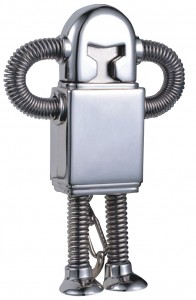
If you’ve been using a USB flash drive for a while, then you already know that it’s terrific for taking your important files with you so you always have access to them. But there are plenty of other things you can do with a USB flash drive. Here are our favourites:
1. Boot up from your flash drive.
If you’re using Windows or Linux, you can actually boot the operating system from the drive. It’s not the easiest thing to do, but there are some guides to follow out on the Internet if you’re savvy enough to try.
2.Run applications remotely.
You can put OpenOffice on your USB flash drive and use its word processor, spreadsheet, presentation tool, drawing software and database to access your files, even if the computer you’re using doesn’t have Microsoft Office or another office suite installed on it. You can get other applications too from PortableApps.com, such as games or an audio or video player.
3.Reset passwords anywhere.
If you forget your password to your Windows system user account, you can use your USB flash drive as a reset disk to quickly get back in. There are tutorials online on how to do it – just do a google.com search for “Create a Vista” password and you should find instructions for creating a USB flash drive password reset disk.
4. Improve performance.
If your hard drive is getting a little full, you can use Windows Vista’s ReadyBoost technology to use the space on your USB flash drive as an additional memory cache. Because the flash drive doesn’t have any moving parts, flash memory is much more responsive and can really improve performance if your system is starved for memory. Just follow the prompts when you insert your USB flash drive to configure it for use with ReadyBoost.
5.Connect wirelessly.
If you’re working in a wireless world using the wireless tools in either Windows XP or Vista, you can save all your network configuration information to the USB flash drive. When you use another computer or any Windows Connect Now (WCN) device, you can quickly connect using the settings on the drive.
6.Protect your data.
If you’re worried about your data falling into the wrong hands, you can use Rohos Mini Drive to safeguard your information. This slick little tool lets you create a secret partition on the drive that you can password protect. Any documents in the partition are safe from prying eyes.
7. Enjoy your music anywhere.
Don’t have an Mp3 player but want to enjoy some tunes? Load your music onto your USB flash drive and use Windows Media Player to access the files. You can also import the music straight into iTunes if you have it installed. Not only do you have your favourite music with you at all times, but you don’t have to worry about the batteries going dead on your Mp3 player.
8. Run your online empire from a flash drive.
With a product like Server2Go, you can run your own website remotely from a USB flash drive. Server2Go supports most of the common web languages, such as Apache, PHP and MySQL. Best of all, it’s free. This is a great feature if you’re a web developer. You can load an entire demo site onto the drive for your meeting with a client.
9.Use like a key on your PC.
A program called Predator turns your USB flash drive into a key that locks and unlocks your computer. When it’s inserted into your USB port, everything works fine. When you remove it, the screen becomes dark and your keyboard and mouse won’t work. This is terrific if you’re working on sensitive projects and want to go get a cup of coffee or a bite to eat without shutting the computer down. When you return, simply insert the USB flash drive and you’re up and running again.
10. Transporting your files.
We saved the most obvious use for last. If you’re running XP, you can use the Microsoft USB Flash Drive Manager to manage file transfers. Once it’s installed, you can move files back and forth easily. If you’re on a Mac, you can simply drag and drop files onto the USB flash drive, which appears as a hard drive icon on your desktop.
And there you have it! Ten really great ideas for improving your productivity, save you time and even money (you don’t need to buy an MP3 player for starters) and get more use out of your USB flash drives, which are inexpensive and so easy to use.
